We hope that each of you, our readers, will enjoy and appreciate this article we present about these 7 Beguiling Insects of Bulgaria. It was certainly our great pleasure to compile the information for you. May it provide you with both education and increased awareness.
Certainly, however, these few species listed herein represent only a portion of the natural wonders found in the region. It’s our belief, though, that they serve as excellent representations of the wonders found here. Check out some of our other articles for similar marvels.
Mediterranean Mantis
Mediterranean Mantis Facts
- Leading off this article about these 7 Beguiling Insects of Bulgaria we present the powerful predator known as the Mediterranean Mantis.
- This fabulous creation of Nature and evolution most frequently goes by the informative common name for fully excellent reasons. The insect also has a less often used general name, though. That’s the similar, but less accurate, term of the iris mantis.
- Scientific professionals, such as researchers, however, typically refer to it by yet another name. That’s because they generally use its technical name when discussing it. The intriguing Arthropod bears the comparatively simple technical name of the Iris oratoria.
- It further shares a distinction in that regard with numerous other species. That’s due to the fact that the eminent Swedish zoologist, Carl Linnaeus, made the first official acknowledgement of it as a separate and distinct species. This he did in the year 1758.
- Regardless of which name one chooses to employ, however, it remains a fascinating creature. Sadly, though, it’s now become regarded as as invasive species insome parts of the world. This occurs due to its expansion into non-native regions by man’s actions.
- Even without this controversial expansion of its range, the Mediterranean Mantis seems to be maintaining a population base that’s both sizeable and sufficient. The IUCN, therefore, lists it as Least Concern. This status appears on the organization’s Red List.
- Nevertheless, the insect faces several potential threats to its continued survival. In this, though, it follows countless other species. Its greatest threats clearly include habitat loss due to the expansion of man, and the ongoing effects of climate change.
Mediterranean Mantis Physical Description
In general overall terms, the marvelous Mediterranean Mantis achieves the same general body shape and appearance as other mantids. That’s not to say, though, that the species lacks any defining physical characteristics. It stands out from others in its own way.
That distinction doesn’t occur in terms of physical size, however. That’s true since it ranks as a roughly average-sized member of its Order. It also displays the physiological trait of sexual dimorphism, like its relatives. In its case, however, this trademark remains quite minor.
The gender-based difference mainly appears in the size of the abdomen of the genders. More specifically, that of the female tends to be slightly larger. The difference further becomes more pronounced as the individual ages. Otherwise, they appear roughly identical.
Individual specimens achieve an average body length of approximately 2.6 in (6.5 cm). Although exceptional individuals naturally occur, even these rarely exceed this by much. Like most mantids, its body develops as highly elongated, and colors adapt as camouflage.
When young, most examples of the Mediterranean Mantis also display an overall pale shade. As these mature, though, this pattern changes to a primary background of grass-like green. In yet another minor gender-based difference, the wings of the female remain short.
But this marvel of Nature clearly distinguishes itself from others of its kind, especially those sharing its range, in one quite spectacular manner. When unfurled, the hindwings display a startling pattern. That’s the presence of a violet-brown eyespot on each of them.
- Kingdom: Animalia
- Phylum: Arthropoda
- Class: Insecta
- Order: Mantodea
- Family: Eremiaphilidae
- Genus: Iris
- Species: I. oratoria
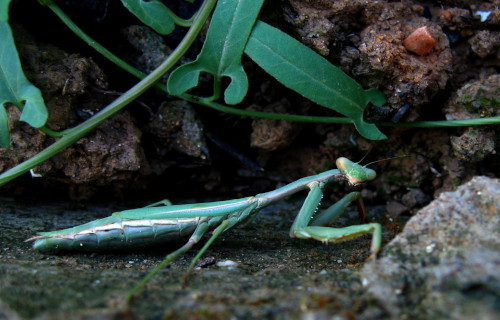
Mediterranean Mantis Distribution, Habitat, and Ecology
Fortunately, both for the Mediterranean Mantis itself, and those of us who appreciate Nature, the Arthropod possesses a comparatively extensive natural range. That range, has, however, been indirectly further extended, and significantly so, by the actions of man.
The fascinating insect evolved originally as native to most of the continent of Europe. That area covers all of the southern portion of the continent, and extends to cover all but the most northerly sections. It does seem to be more common in the south, though.
The very name of the invertebrate stems from the portion of Europe in which the first studies of it occurred. That’s because those earliest endeavors to understand it took place in the region of the Mediterranean Sea. This include such locations as Greece and Italy.
From there, however, man spread it to other parts of the world. This includes portions of Asia, the Middle East, and the United States, in North America. In all areas, though, it’s highly versatile in its habitat choice. It appears wherever sufficient vegetation occurs.
That holds true due to its nature. That’s because, like other mantises, it evolved as a pure carnivore. The beautiful Mediterranean Mantis typically feeds as a highly efficient ambush predator. It also consumes virtually any prey of small enough size for it to handle.
Its own predators, meanwhile, are few. These mostly consist of various species of birds. When threatened, though, it displays an evolved response. It faces the threat, rears up, and then raises and waves its forelegs threateningly. It also displays the large eyespots.
Peacock Butterfly
Peacock Butterfly Facts
- Next up among our choices for inclusion in this compendium of 7 Beguiling Insects of Bulgaria comes the stunning Lepidoptera named the Peacock Butterfly.
- For many reasons, this stunning invertebrate most frequently goes by the common name we’ve used here. Yet, the beautiful butterfly also has another, general name it’s known by. That’s because the creature’s also often referred to as the European peacock.
- Among professionals, such as researchers, however, it’s better known by its technical name. Fortunately for the rest of us, though, that’s a much simpler to pronounce term than most such terms. That’s due to the fact that it bears the official name of Aglais io.
- It received that official moniker due to the efforts of the renowned Swedish researcher, Carl Linnaeus. He recorded the first official recognition of the invertebrate as a separate and distinct species. This scientifically noteworthy deed occurred in 1758.
- Entomologists originally classified it as the sole member of the genus Inachis. Subsequent research, however, later reassigned it to another. Due to the efforts of later researchers, it’s now located in the genus Aglais, along with other related species.
- Thankfully, the work of Nature and evolution appears to be maintaining a population base that’s both stable and sufficient. This further seems to hold true throughout the entirety of its natural range. The IUCN, therefore, presently has no listing for it.
- The Peacock Butterfly nevertheless does face some potential threats to its existence. In this regard, it follows the pattern of most species on the plant. Habitat degradation or loss pose a potential danger. Its greatest threat, though, is likely climate change.
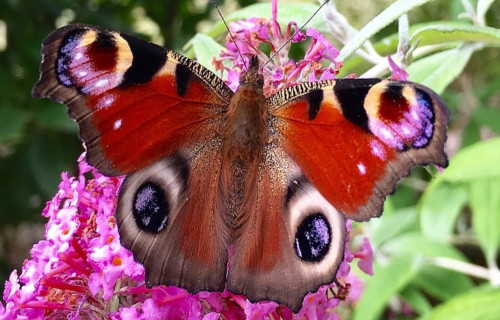
Peacock Butterfly Physical Description
Like many of its relatives, the remarkable Peacock Butterfly easily draws the eye of all those fortunate enough to encounter it. Unlike some of them, however, it merits that attention for more than just its distinctive appearance. It’s also has a respectable wingspan.
It further differs from many of its kindred in yet another way. That’s due to the fact that the creature displays no noticeable degree of sexual dimorphism. Distinguishing the two genders, therefore, frequently presents a problem for the average amateur viewer.
Mature individuals of both sexes attain an average wingspan measuring between 2.0 – 2.2 in (50 – 55mm). Exceptional specimens occasionally occur, of course. Yet even these scattered individuals rarely exceed this by much. Various factors, including environment, affect this.
It’s the visual aspect of the wings of the stunning Lepidoptera that garner the most attention, though. The underneath of the wings typically displays a uniform light brown. This appears in random patterns of shades and swirls. Irregular darker lines also cross the hindwings.
The upperside, however, displays as vastly different. Here is where the Peacock Butterfly earns its name. The top part of the forewing shows red, with brown patches. It also shows black-gray edges. Eyespots, like those of peacocks, also appear on the edges of each wing.
- Kingdom: Animalia
- Phylum: Arthropoda
- Class: Insecta
- Order: Lepidoptera
- Family: Nymphalidae
- Genus: Aglais
- Species: A. io
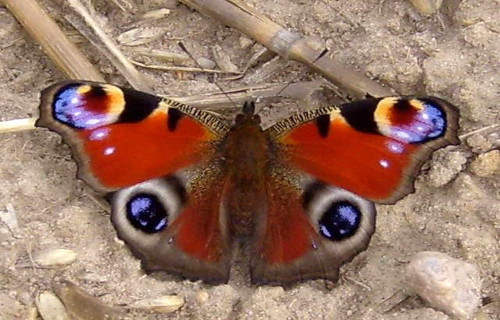
Peacock Butterfly Distribution, Habitat, and Ecology
Fortunately for it, the visually dazzling Peacock Butterfly inhabits a comparatively broad swathe of the globe. This same range also happens to include regions already well known for their abundance of natural beauty. It therefore fits right in with its surroundings.
Indeed, this marvel of evolution evolved as native to most of the continent of Europe. Yet its range doesn’t simply stop there. That’s due to the fact that population groupings of this wondrous Arthropod also appear in temperate Asia. It’s further seen as far east as Japan.
Throughout the entirety of that range, though, it displays the same preferences in its choice of habitat. These, however, also remain comparatively broad. Populations of the beauty inhabit a wide range of locations, though all appear in areas of temperate conditions.
This flexibility also includes a range of altitudes. Concentrations of the invertebrate appear at altitudes ranging from lowland sections, to altitudes of up to 8,200 ft (2,500 m) above sea level. These include such locations as meadows, fields, pastures, woods, parks, and gardens.
Adult specimens of the Peacock Butterfly feed in much the same manner as other butterflies. These feed primarily on the nectar of various local plant species, such as dandelions, clover, and willows. Some also augment this by feeding on tree sap and rotten fruit.
Males tend to be territorial. Females, though, move over large areas. Females lay eggs in early spring, typically in batches of around 400. Its eye-spots deter most, though not all, avian predators. Rodents, however, are not bothered by these, and thus form its major predator.
Conehead Mantis
Conehead Mantis Facts
- Appearing in the third spot in this listing of 7 Beguiling Insects of Bulgaria, though only due to random selection, we give you the remarkable Conehead Mantis.
- The highly evocative term applied to it appropriately serves as the common name for this truly remarkable insect. This marvel of Nature also goes by another name, though. That’s its somewhat difficult scientific name of the Empusa pennata.
- Regardless of which of these term you use for it, though, it remains blessed with a distinctive appearance. The common name, quite understandably, derives from the presence of the incredible structure on the top of the invertebrate’s head.
- The first recorded scientific recognition of this creature as a separate and distinct species occurred in the year 1815. That formal recognition took place as a result of the work of the well known Swedish naturalist, Carl Peter Thunberg.
- For the moment, the marvelous Conehead Mantis appears to be maintaining a stable and sufficient population. This further seems to be the case throughout the entirety of its range. As a result, the IUCN currently list the species a Least Concern.
- The invertebrate must nevertheless be considered to be facing at least some threats to its existence. One of these is probably the danger posed by increasing habitat loss. Its greatest threat, however, likely consists of ongoing climate change.
Conehead Mantis Physical Description
Although the marvelous Conehead Mantis fully deserves appreciation, this does not derive solely from its sheer physical size. That aspect of the invertebrate does nonetheless rank as respectable, since it represents an above-averaged size variety of mantis.
Like most of its relatives, it also displays a moderate degree of sexual dimorphism. In its specific case, this trait manifests itself in two separate ways, though. Simple physical size forms the first of these, with the female attaining a slightly greater length than the male.
This wonder of Nature achieves a size slightly greater than the European Mantis. That being said, females reach an average length of about 4 in (10 cm). The smaller males, meanwhile, attain varying lengths, but rarely grow beyond 3 in (7.6 cm) in total length.
The second form of gender-based differences among the Conehead Mantis appears in the form of the antennae of the male. These appendages possess a fine, feathery characteristic. However, only the male of the species develops these distinctive features.
Otherwise, the genders remain similar. The colors vary, since it employs active camouflage, but certain ones are more common. These consist of green, pink, and various shades of brown. Its most noticeable feature, though, is the cone-shaped structure on the head.
- Kingdom: Animalia
- Phylum: Arthropoda
- Class: Insecta
- Order: Mantodea
- Family: Empusidae
- Genus: Empusa
- Species: E. pennata
Conehead Mantis Distribution, Habitat, and Ecology
The remarkable Conehead Mantis possesses a comparatively broad, if somewhat broken, range of habitation. It’s broad because it covers parts of both Europe and Asia. It’s broken, though, since it only appears in scattered parts of the two continents, not evenly.
More precisely, in Europe, the arthropod seems to live in the countries of France, Portugal, Spain, Italy, Bulgaria, and Greece. In Asia, meanwhile, its only known habitat consists of the country of Lebanon. The exact for this pattern presently remains undetermined.
In all regions of the globe in which it appears, though, its habitat preference remains the same. This particular form of mantis prefers to inhabit more open areas, as opposed to denser forest regions. This mainly includes regions of scrub and perennial herbs.
The amazing Conehead Mantis prefers such regions because of its feeding habits. Like its many relatives, it evolved purely as a carnivore, and acting as an ambush predator. This powerful and efficient hunter eats a vast variety of small insects native to the same habitat.
In turn, the powerful hunter falls prey to other, larger predators. These vary according to its particular region, of course. Overall, however, these mainly include such animals as snakes, frogs, lizards, and a wide variety of avian species sharing its region.
Red-Tailed Bumblebee
Red-Tailed Bumblebee Facts
- The next creature making its appearance in this article about these 7 Beguiling Insects of Bulgaria happens to be the fascinating Red-Tailed Bumblebee.
- This beautiful insect quite understandably goes by this simple, yet descriptive, common name. Its official scientific name, meanwhile, remains much more difficult to pronounce. That’s because it’s the known to scientists as Bombus lapidarius.
- Regardless of the term one uses for it, however, it’s a lovely and fascinating member of the Bombus Genus. It’s also a locally important species. The first official recognition of the remarkable invertebrate, furthermore, occurred in the year 1758.
- This acknowledgement of it as a separate species took place as a result of the efforts of an individual well known in the annals of entomology. More specifically, the renowned Swedish botanist and zoologist Carl Linnaeus made the original identification.
- Most fortunately, the amazing Red-Tailed Bumblebee appears to be maintaining a sizeable and stable population base. Moreover, this tendency further seems to hold true throughout the entirety of its natural habitat range. That’s a rarity today.
- The IUCN therefore presently has no listing for it on the organizations Red List of Threatened Species. That fortunate status nonetheless remains at some risk, however. This holds true due to various factors, many of them shared by countless other species.
- For one, it does appear to be declining in numbers in some agricultural areas. Due to this, it’s now considered Near Threatened in specific portions of its range. Its greatest potential threat, though, undoubtedly consists of the ongoing threat of climate change.
Red-Tailed Bumblebee Physical Description
The gorgeous Red-Tailed Bumblebee, in fact, bears a striking resemblance to yet another variety of bumblebee sharing its range. This fact frequently makes identifying the correct species difficult for any but the most highly trained and experienced observer.
The fabulous arthropod also displays a moderately strong degree of the physiological trait of sexual dimorphism. In its particular case, this characteristic manifests itself in terms of both color and size. Males of the species tend to be slightly smaller than females.
It further displays this gender-based difference in terms of patterns of color. More precisely, however, the males of this awesome insect present three bands of yellow, one at the base of the abdomen, and two on the thorax. It additionally has the standard red tail
Females of the insect, including the queen usually present a slightly different appearance. Firstly, these lack any of the yellow bands. Secondly, this gender of the invertebrate displays a more extensive red-colored section, covering roughly half the abdomen.
Males of the Red-Tailed Bumblebee attain an average overall body length of between 0.55-0.63 in (14-16 mm). The females, meanwhile, develop in a slightly greater size range. These average between 0.43-0.63 in (11-16 mm) in length. Both have an average-sized proboscis.
- Kingdom: Animalia
- Phylum: Arthropoda
- Class: Insecta
- Order: Hymenoptera
- Family: Apidae
- Genus: Bombus
- Species: B. lapidarius
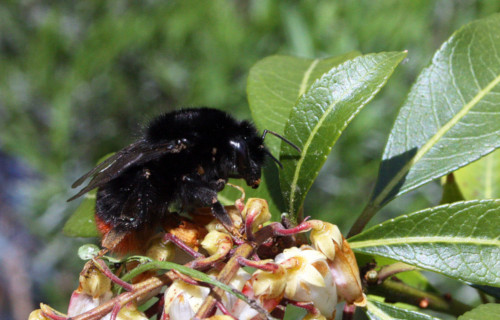
Red-Tailed Bumblebee Distribution, Habitat, and Ecology
There’s very fortunate news for those who appreciate the beauty of Nature. That’s due to the fact that the Red-Tailed Bumblebee evolved as native to a relatively broad swathe of the world. More specifically, it remains native to a particular portion of the continent of Europe.
With further precision, in this region population concentrations appear throughout the entire region. The creature does, however, appear in greater concentrations in certain areas. These include the countries of Greece, Britain, Sweden, Finland, and Germany.
Sadly though, in Ireland its numbers seem to be declining rapidly. Wherever the insect lives, however, it proves itself to be highly adaptable in terms of where it makes its home. That’s because population groupings manifest in several different habitat types.
These locations even include such public regions as gardens and parks. It most commonly chooses to live in areas consisting of very open terrain. Unlike some varieties of related species, though, it generally avoids living in areas of moderate to heavy forestation.
The Red-Tailed Bumblebee makes its appearance in the summer, between June and August. Being social insects, like many Hymenoptera, all members of the hive work together. In its case, there’s little hierarchy among workers, just between them and the queen.
Most types of bumblebees generally stay close to their hive when foraging. This one, however, tends to roam relatively great distances in search of food. Some individuals, in fact, venture as much as 5,741 ft (1,750 m) from the hive. For its kind, that’s a long distance.
The hives themselves, meanwhile, appear in various types of locations. In this it’s an opportunistic species. Locations for nests include such unexpected areas as under large stones or fallen logs. Colonies remains small, though, rarely exceeding 200-300 individuals.
European Mantis
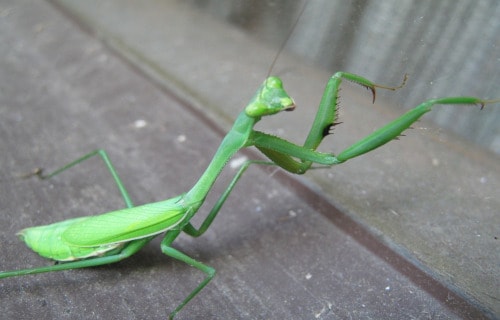
European Mantis Facts
- Now showing in the fifth spot among these entries into this compilation of 7 Beguiling Insects of Bulgaria comes the aptly-named European Mantis.
- Intriguingly. the name it’s known by serves as one of the common names of a particularly large variety of the amazing mantis. However, this extremely fascinating insect also goes by the other frequently used common name of the praying mantis.
- It’s perhaps also of interest that many people often employ the latter term for all types of mantises, regardless of origin. Meanwhile, the scientific name of this extremely impressive creature remains the relatively simple to pronounce Mantis religiosa.
- Regardless of which term used to refer to it, this species, like most of its relatives, often fascinates many people. In point of fact, quite often, this species represents the archetype of all mantises, in the minds of individuals, when polled on the topic.
- Further, although not endemic to North America, this remarkable arthropod eventually became introduced into the region. Although no proof exists, many experts believe this introduction occurred accidentally, via shipping containers.
- It’s also believed that this introduction, whether it was accidental or otherwise, occurred near the end of the 19th century. Regardless of how it occurred though, it has now spread incredibly. This has had a beneficial result for it.
- Quite fortunately, the incredible European Mantis appears to be maintaining a sufficiently stable population. This further appears to be true throughout the majority of its range. This places it in the small group of species to make that claim.
- The IUCN,therefore, presently lists it as Least Concern. This status appears on the organization’s Red List of Threatened Species. Like many species, this animal nevertheless may be considered to be at risk, due to the ongoing effects of climate change.
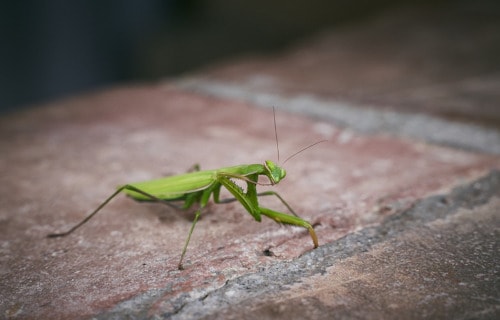
European Mantis Physical Description
Although not the largest of all known mantids, the gorgeous European Mantis nevertheless stands out from the crows. In point of fact, it does rank among the larger varieties. However, differences in physical sizes quite frequently occur among individuals.
But, this holds true due to a remarkably common trait. That’s the fact that this species, like most related creatures, displays a certain physiological tendency. This holds true since it shows a moderate degree of the characteristic of sexual dimorphism.
In this variety, the females attain a greater length and weight than the male. Firstly, the female achieves a length averaging between 2.75 – 3.5 in (7 – 9 cm). Secondly, in addition to a thinner shape, the male only reaches an average length of 2.4 – 2.75 in (6 – 7 cm).
The coloring of the European Mantis also varies among individuals. Gender plays no apparent role in this pattern, however. The shades displayed by individuals also differ. The basic pattern consists of shades of brown, green, and yellow. But, a few display a dark black.
- Kingdom: Animalia
- Phylum: Arthropoda
- Class: Insecta
- Order: Mantodea
- Family: Mantidae
- Genus: Mantis
- Species: M. religiosa

European Mantis Distribution, Habitat, and Ecology
Although the stunning European Mantis, as the name indicates, originated in southern Europe, in now inhabits a broad swathe of the world. In addition to areas in which it was introduced, the arthropod also spread naturally to several other regions of the globe.
Due to that spreading, it now naturally inhabits much of the continents of Africa and Asia. Man also introduced it to the continent of Australia. Fortunately for it, therefore, this invertebrate displays a remarkable degree of adaptability in regards to its choice of habitat.
That holds since it inhabits a wide range of ecosystems. These include such locations as temperate and tropical forests, urban areas, and even semi-arid regions. It does, however, prefer the area it appears in to have sufficient quantities of grass and herbaceous plants.
Furthermore, one reason for this preference occurs due to the need for a sufficient and steady food supply. The European Mantis evolved as a powerful, carnivorous insect. The invertebrate also hunts its prey as a highly effective ambush predator.
Finally, this prey typically consists of several types of insects. These include such creatures as grasshoppers, crickets, moths, bees, and flies. Individuals of this species nonetheless also occasionally tackle significantly larger prey, such as smaller invertebrates.
Violet Carpenter Bee
Violet Carpenter Bee Facts
- Now showing in this listing of the species we selected to represent 7 Beguiling Insects of Bulgaria you will find the awesome Violet Carpenter Bee.
- Notably, the term for the marvel serves as the common name for a particular species of bee that truly stands out visually. However, this fabulous invertebrate also goes by the hard to pronounce scientific name of the Xylocopa violacea.
- Regardless of the name one uses for it, though, the magnificent insect merits attention for much more than simply its beauty. Along with its obvious and distinctive appearance, this animal also stands out from related species for its physical size.
- Impressively, the lovely insect also ranks as one of the largest bees in its part of the world. Thankfully, it also holds yet another distinction. That’s the simple fact that the insect remains extremely docile, and attacks only if directly threatened.
- Quite fortunately, the fabulous Violet Carpenter Bee also stands out from other bees in one more important manner. In point of fact, unlike many related species, its numbers appear to be holding relatively steady, at least for the moment.
- The IUCN therefore currently has no listing for the insect on the organization’s Red List of Threatened Species. Nonetheless, it must be considered to be at potential risk. This mainly occurs due to the ongoing effects of climate change.
Violet Carpenter Bee Physical Description
The visually magnificent Violet Carpenter Bee truly draws the eye of the observer, given its incredible appearance. However, this remarkably lovely arthropod achieves this with uniquely. It does so with a special combination of color and size.
Like a great many insects, including related species, it also displays one more physical attribute of interest. That’s true since it possesses the physiological trait of sexual dimorphism. This remains a highly common trait throughout Nature.
Not only that, but mature adults of both genders attain an average body length measuring 1.2 in (3 cm). That’s a remarkably impressive measurement for a bee. In addition, the typical wingspan achieved by both sexes measures roughly 2 in (5 cm).
The bodies of both the males and females also have the same general shape. That holds true due to the fact that both genders display a thick, black colored form. The majority of the remarkable body of the bee appears covered in small hairs.
The female Violet Carpenter Bee also stands out for yet more reasons. In this instance, that refers to the fact that she physically distinguishes herself from the male in regards to a stinger. She develops one, while the male of the species does not.
However, it’s the delicate-seeming wings themselves that garner most of the attention this arthropod receives. That’s true since these sensitive parts of its body display an astonishing violet and blue color. In addition, these also possesses an iridescent quality.
- Kingdom: Animalia
- Phylum: Arthropoda
- Class: Insecta
- Order: Hymenoptera
- Family: Apidae
- Genus: Xylocopa
- Species: X. violacea
Violet Carpenter Bee Distribution, Habitat, and Ecology
The remarkably stunning member of the Order of Hymenoptera known as the Violet Carpenter Bee impresses researchers in yet another way. That occurs given the fact that the wondrous arthropod evolved as native to a comparatively broad range.
In point of fact, this territory covers parts of two separate continents. This represents one more statistic about the creature that distinguishes it. To be more precise, the beautiful invertebrate inhabits portions of both the continents of Asia and Europe.
Even within that range, however, this marvelous and relatively large variety of bee has very specific preferences for its habitat. That holds true because this fascinating insect most commonly appears in regions consisting of wooded areas.
Most commonly this habitat choice consists of forests. But, it can even include such surprising places as parks. Individuals further inhabit a great range of altitudes. Quite amazingly, individuals have been seen at elevations of as much as 5,249 ft ( 1,600 m).
Its lifestyle remains consistent with the greatest percentage of its relatives. Just like other types of carpenter bee, the Violet Carpenter Bee lives a primarily solitary life. In fact, members of this intriguing species only come together to mate.
Also, individuals of both genders bore tunnels into soft wood with their powerful mandibles. After mating, the female lays her eggs in chambers she constructs. Finally, both genders feed on pollen and nectar taken from various flora.
Death’s-head Hawkmoth
Death’s-head Hawkmoth Facts
- Closing out this collection of 7 Beguiling Insects of Bulgaria we’ve put together for you comes the bewildering creature known by the moniker of the Death’s-head Hawkmoth.
- Distinctively, the unusual common name for this amazing Lepidoptera remains that of the term given above. Perhaps most notably, though, the term actually serves as the common name for a total of three species within the genus Acherontia.
- The distinctiveness of these three forms, however, does not simply stop there. That’s because, in addition to the astonishing obvious physical trait, other facts also set it apart from most other types of moths. These, in fact, are fascinating in their own right.
- First of all, the astonishing and highly unusual Death’s-head Hawkmoth evolved the ability to emit a high-pitched chirp. This action only occurs, though, when the arthropod feels either threatened or irritated. Few insects can make sounds internally.
- Secondly, all three varieties also evolved as relatively rapid fliers. In point of fact, one of them, the Acherontia atropis, constitutes the fastest known moth on earth. That’s because individuals of that species can reach speeds of up to 30 mph (48 kph).
- The IUCN, furthermore, does not currently have a listing for any of the three varieties. That’s surprising, given the fact that each of them qualifies as quite rare. Like many creatures, it obviously faces threats such as climate change and habitat loss.
Death’s-head Hawkmoth Physical Description
Not surprisingly, physical differences naturally exist between the different types of Death’s-head Hawkmoth. All three types, however, also as is to be expected, remain quite similar in terms of appearance. Many general descriptions therefore apply to them all.
It must be pointed out, though, that measured adult wingspan varies significantly, even within the same gender and species. While not unknown, this trait definitely qualifies as uncommon. Due to this fact, adults range in width of wings from 2 – 8 in (5 – 20 cm).
In addition, like the majority of Lepidoptera, this marvel of Nature displays a moderate degree of sexual dimorphism. As a result of this physiological trait, in its case, females generally develop slightly larger than the males. These also tend to be bulkier in shape.
The body of the magnificent Death’s-head Hawkmoth also displays a comparatively thick, bullet-shaped form. The two forewings further develop long and narrow. Yet the hindwings, however, appear much shorter, like most related forms of invertebrate.
Its coloring also varies, quite understandably. But these typically consist of combinations of shades of brown, black, gray, and yellow. The astounding presence of a human skull-like marking on the back of the thorax, however, represents its most memorable feature.
- Kingdom: Animalia
- Phylum: Arthropoda
- Class: Insecta
- Order: Lepidoptera
- Family: Sphingidae
- Genus: Acherontia
Death’s-head Hawkmoth Distribution, Habitat, and Ecology
The species bearing the common name of Death’s-head Hawkmoth also have different habitat ranges. That alone sets them apart from many of their peers. One appears in parts of Europe. The other two members of the genus, however, live in scattered sections of Asia.
All forms of this amazing insect, furthermore, seem to be highly adaptable to varying habitats. As a general rule, though, the insect appears in regions with substantial foliage. This most commonly includes temperate forests, as well as parks, and even home gardens.
The larval form of the Death’s-head Hawkmoth stays on or near a single host plant. These it feeds on voraciously. It shows no preference for type of host. The adults show a preference for honey, in addition to fruit. As a result, adults often raid the hives of honeybees.
Its own natural predators, meanwhile, consist of the same as other moths. These mainly consist of the various birds found in its region. Many bats also love to feed on it, though. Finally, the chirping ability it evolved serves the intended purpose of deterring these.
7 Beguiling Insects of Bulgaria
We sincerely hope that you completely enjoyed reading, and hopefully learning from, this article we’ve written about these 7 Beguiling Insects of Bulgaria. It’s also our sincere hope that doing so has left you with either a new or renewed appreciation for such wonders of Nature.
Unfortunately, however, many of their kindred around the world now find themselves facing strong threats to their continued existence as a species. Many of those dangers, in fact, stem from the actions of mankind. We must do all we can to protect and preserve them all.
Check out our other articles on 7 Breathtaking Canyons and Gorges, Pikachu Nudibranch, 4 Wondrous European Woody Shrubs, Luray Caverns, 5 South China Sea Species
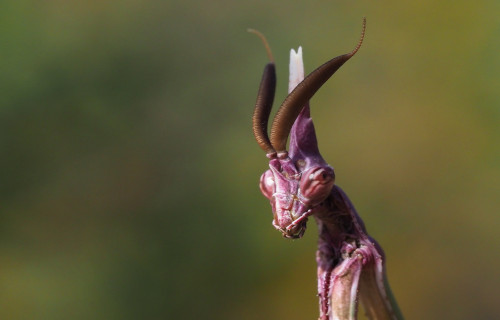
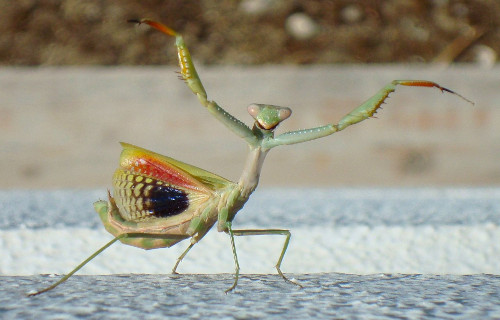
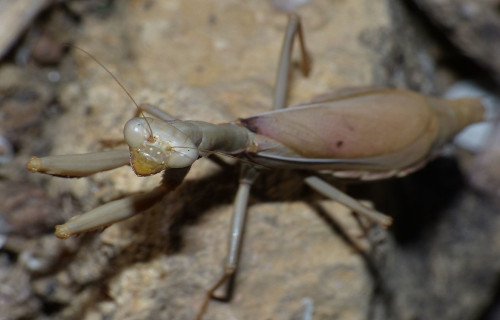
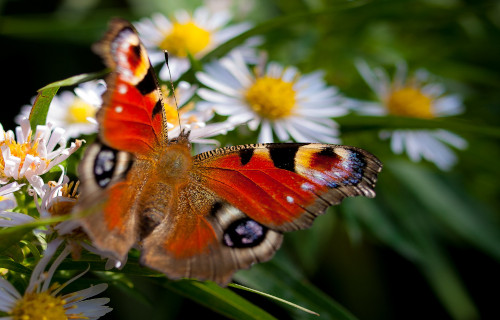
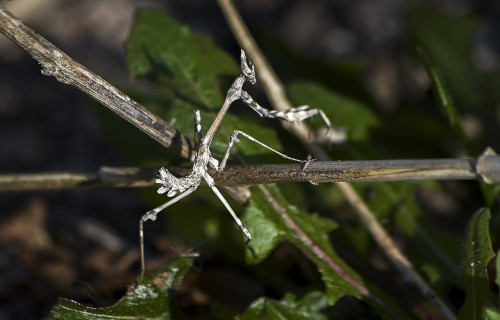
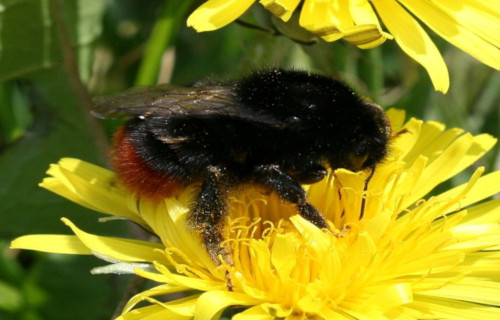
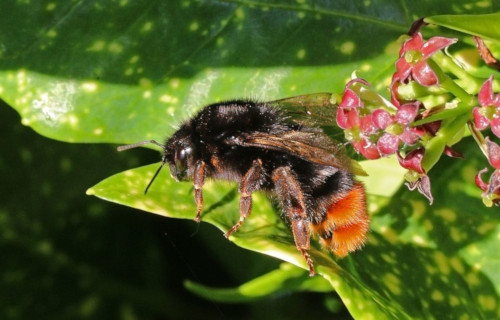
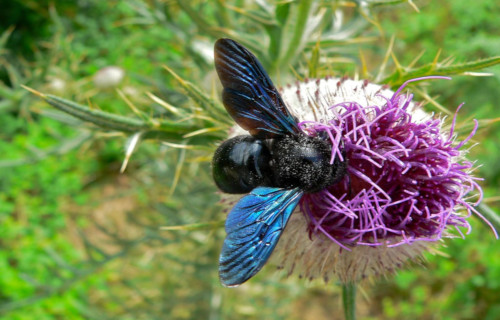
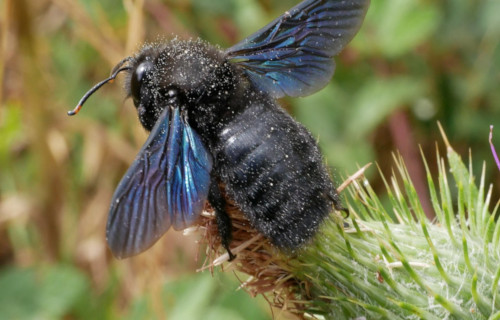
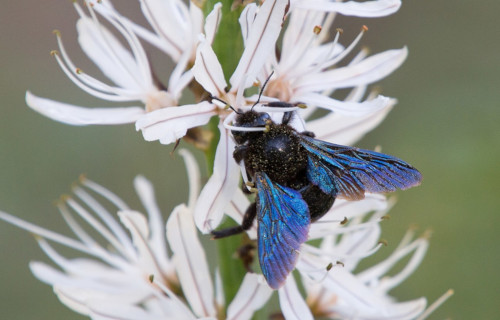
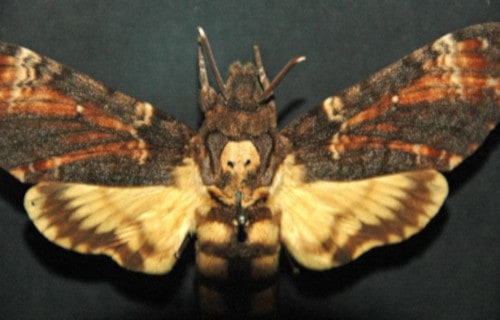

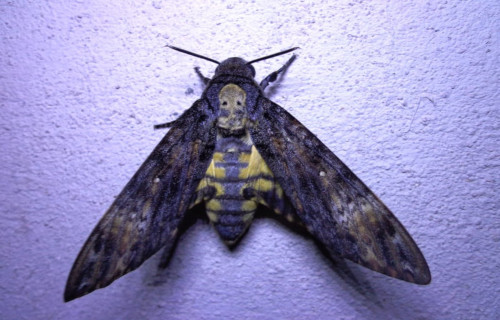









Leave a Reply